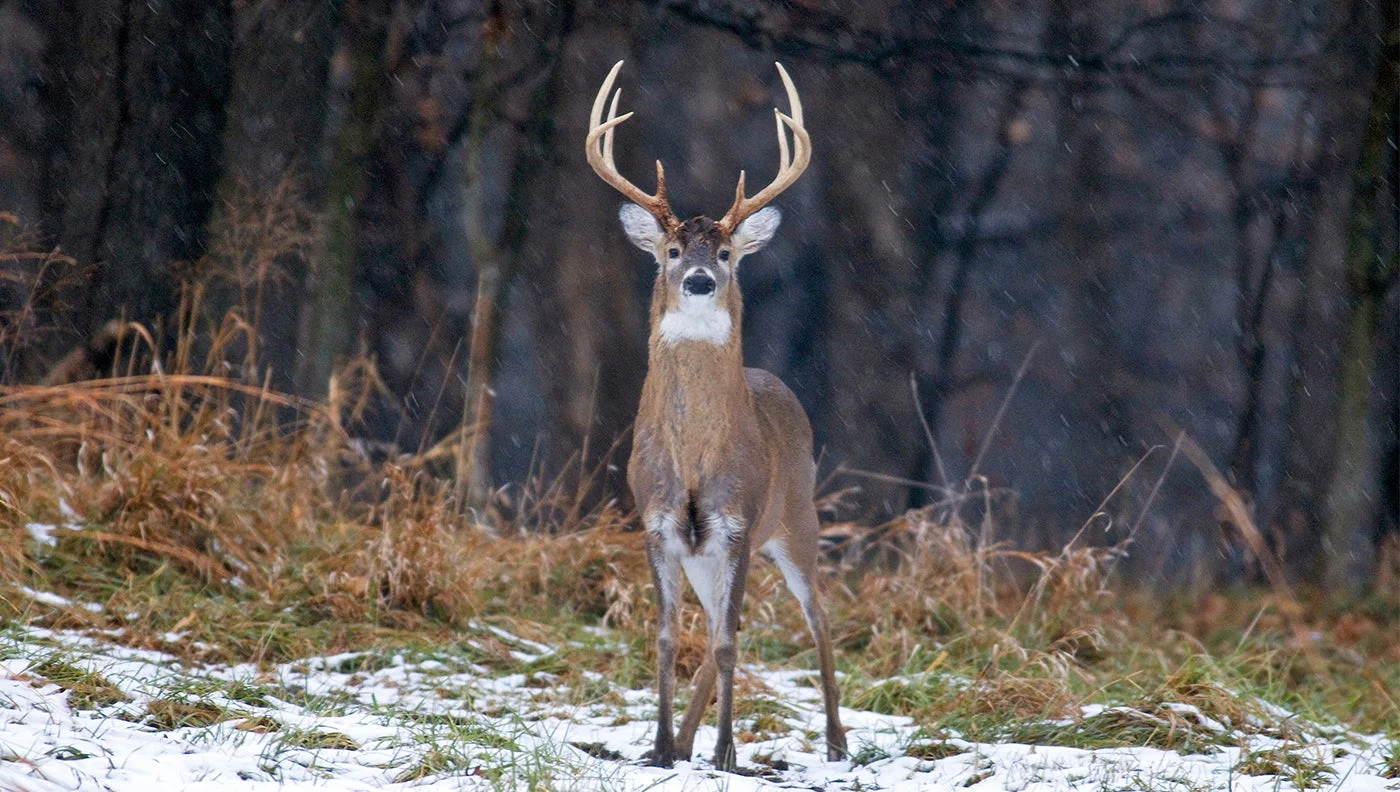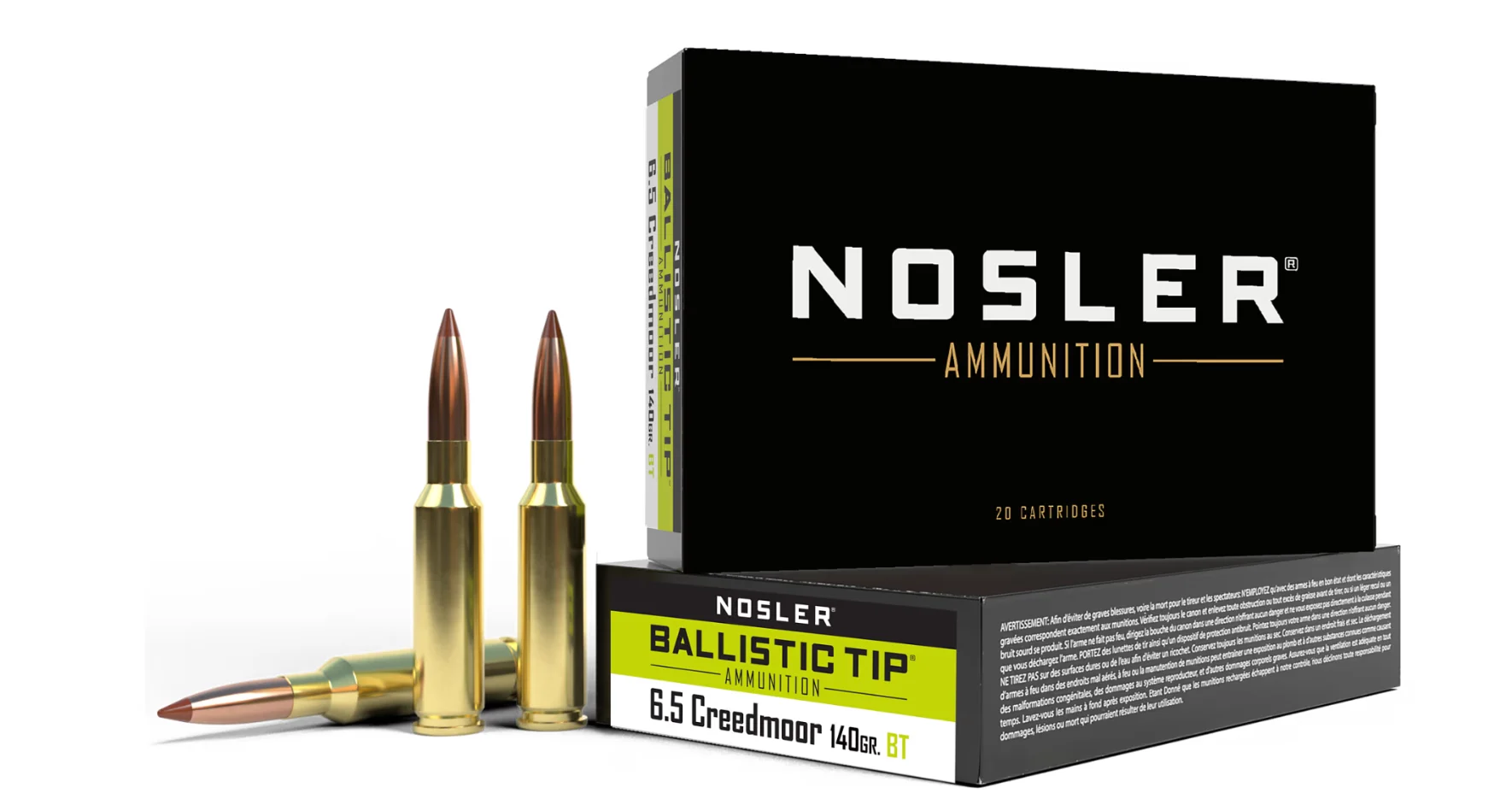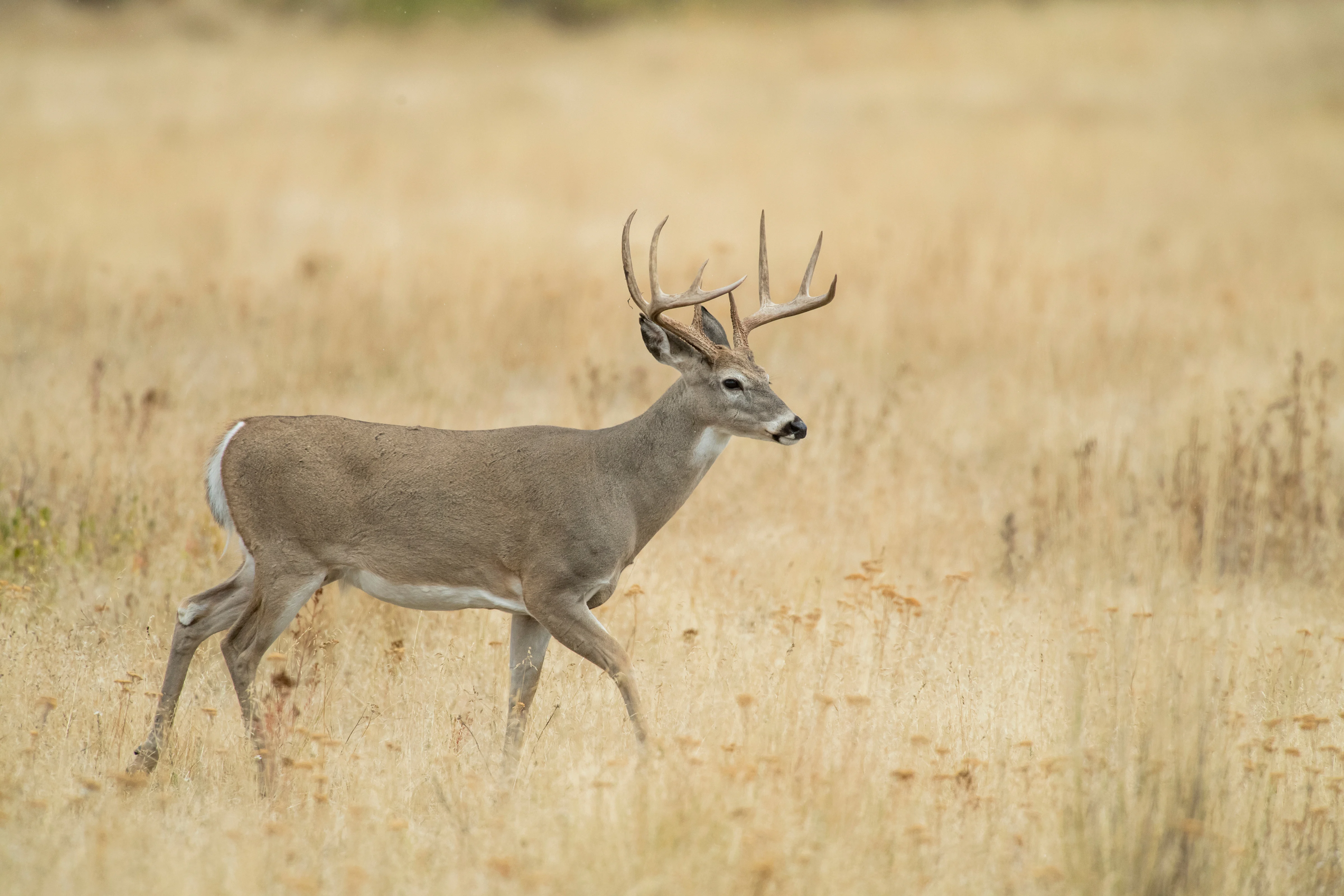How do you drop a deer in its tracks? is something people have been asking me since I started writing about guns and hunting around the same time that the monks at Iona Abbey finished illuminating the Book of Kells. On one hand, I don’t think the question perfectly reflects what people really want to know. On the other, it’s a lot pithier than How do you drop a deer fast enough that it won’t run over onto the a-hole neighbor’s land and force me to go begging? Or…fast enough that it won’t run over the next ridge where another hunter might shoot it a second time and claim it as his own?
So, just to be safe, I’ll answer it two ways, both how to see to it that your critter hits the ground after only a few steps or a short sprint—and how to drop a deer more or less right in its tracks.
Related: The Truth About the “Killing Power” of Rifle Cartridges
When You Need to Drop a Deer In Its Tracks
If you’re hunting on a good-size piece of private land or a tract of public so remote and wild that you're not worried about other hunters, then go ahead and aim just behind the shoulder on a broadside deer if you want to. That shot is as deadly a shot as anything. The only caveat is that you may need to do some tracking, which is fine. If the shot is a good one, it'll be a pretty short blood trail.
On the other hand, if your deer can quickly run onto another property, or to where there may be other hunters, or into a deep gully or to nasty cover where it'll be a pain to get it out...or any place where headaches await, for whatever reason, there are ways to make sure the animal hits the ground faster. So, here’s what you can do to reduce or eliminate the drama, bearing in mind that there are no guarantees.
Related: Where to Shoot a Deer with Gun or Bow
Where to Aim to Drop a Buck Fast
Remember that animals stop running when the brain or the spine are damaged, or when oxygen no longer reaches the brain. Here are two shots that will do one or both almost instantly, plus a third lethal shot that may not kill instantly but will anchor you buck quickly.
1. The Face-On Chest Shot

A shot right to the center of this buck’s chest will usually drop him where he stands.
If a deer is facing you, shoot for the center of the chest, smack in the middle. If you do this right, with a squishy bullet (see below), you will annihilate both lungs and the heart. The animal will either go down in its tracks or it will sprint for 5 or 10 yards. Everything having to do with oxygen will have been demolished.
Best Bullet for the Job: Here, you want a quick-expanding bullet. The one with which I’ve had the most experience is the Nosler Ballistic Tip. It opens up fast and does a lot of damage. I would not use such a bullet on elk, which are big and tough, but they’re just fine on deer, which are not big and tough. Two other quick-expanders that I have used with success are the Browning BXR and Winchester's Deer Season XP.
Related: How to Pick the Perfect Bullet for Deer Hunting

2. The Base-of-the-Neck Shot
Second, with the deer facing away from you, aim for the base of the neck, right in the center. Normally, I avoid neck shots like the plague, because you stand an excellent chance of hitting muscle and nothing else. You should avoid it here, too, if you are too far to be sure of your aim. If you are reasonably close and you shoot precisely, however, you are either going to sever the spine or give it such a shock that the deer will go down in its tracks and you are then obliged to shoot a second time and finish it. (For this, I favor a shot directly behind the fore-leg into the heart from as close as you can get. Very often, if a deer is shot in the heart while mobile, it will make a tremendous leap and a mad dash and then collapse, but not if it’s prone, and it will expire in seconds.)
Best Bullet: Ideally, you want quick-expander here, too. That said, a good controlled-expanding bullet should get the job done if that's what you are loaded up with.
What about a broadside shot, you say? Well, based on many decades of shooting deer, I don’t believe there is a broadside shot that is as sure a bet, in terms of a bang-flop, as the two shots above. But if you do get a broadside shot, there is a way to up the odds of your deer going down quickly. Which brings us to:
3. The Broadside High-Shoulder Shot

Bring the crosshairs one-half to two-thirds up the body and hold them on the center of the shoulder or a touch forward of that. This shot will definitely get the lungs, and is apt to also wreck the shoulder blade and some of the spine as well. I have taken this shot many times and can tell you that a deer that has sustained this kind of damage can manage to run a few yards, maybe, but that’s it.
Best Bullet: For the high-shoulder shot, you’ll want a tougher, controlled-expansion bullet, as it will need to penetrate through bone and muscle. Good options include the Swift Scirocco and Nosler's Partition and Accubond bullets. Note that I haven’t mentioned specific cartridges for any of these bullet recommendations. That’s because one is pretty much like another, and because marksmanship is far more important.
Finally, just because you want a quick kill doesn’t mean it needs to be a one-shot kill. I never hesitate to send a follow-up shot. Two quick shots are no more offensive to the world at large than one shot, and very often the second one is what does the job. As I said, there are no guarantees when it comes to dropping deer in their tracks. But if you follow the advice above and do your part, the critter will likely go in only one direction—straight down.


